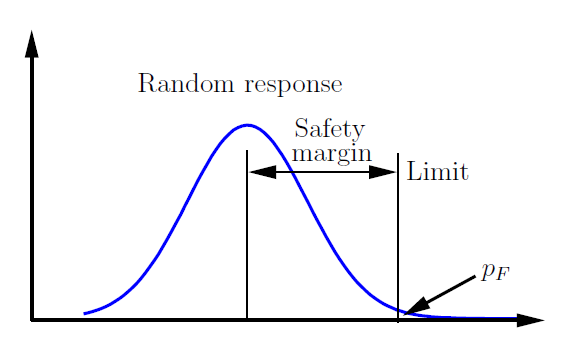Due to target-oriented, automatic optimization of virtual products new design possibilities are explored. However, highly optimized designs lead to high imperfection sensitivities and tend to loose robustness. Often the deterministic optimum is pushed to the boundaries of the feasible design space. As a result the optimized design, which was found by assuming deterministic model properties, may not be realizable in a production process. For this reason it is necessary to investigate, how the optimized design is affected by scattering model input variables, which could be e.g. geometry and material parameters, boundary conditions and loads. The scattering inputs can be modeled within optiSLang by means of scalar random variables having a certain dependence between each other. Random variables have the advantage compared to other uncertainty models, that efficient methods of the well developed probability theory can be applied.
A robust design may be characterized intuitively in that way, that its performance is
largely unaffected by random perturbations of the model inputs. A possible measure is the
variance indicator, where the relative variations of the critical model responses are
compared to the relative variation of the input variables. If certain model responses are
limited with respect to an undesired performance, the safety margin can be quantified as the
interval between the mean value of the model response and the limit. This is shown in Figure 4.1: Safety Margin. The safety margin can be formulated in terms
of the standard deviation of the model response. In the variance-based robustness analysis a
specific safety margin , which has to be defined by the designer, has to be proven for all
critical responses
(4–1) |
Alternatively the probability that a certain limit is exceeded can be quantified and proven to be less than an acceptable value. This probability indicator can be eval- uated by the probability-based robustness analysis, often called reliability analysis.



